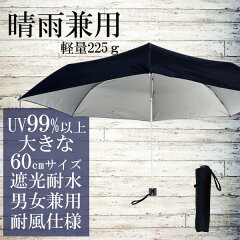
<prologue>
I started a blog called “The Baby Boomer Generation’s Miscellaneous Blog”(Dankai-sedai no garakutatyou:団塊世代の我楽多(がらくた)帳) in July 2018, about a year before I fully retired. More than six years have passed since then, and the number of articles has increased considerably.
So, in order to make them accessible to people who don’t understand Japanese, I decided to translate my past articles into English and publish them.
It may sound a bit exaggerated, but I would like to make this my life’s work.
It should be noted that haiku and waka (Japanese short fixed form poems) are quite difficult to translate into English, so some parts are written in Japanese.
If you are interested in haiku or waka and would like to know more, please read introductory or specialized books on haiku or waka written in English.
I also write many articles about the Japanese language. I would be happy if these inspire more people to want to learn Japanese.
my blog’s URL:団塊世代の我楽多(がらくた)帳 | 団塊世代が雑学や面白い話を発信しています
my X’s URL:団塊世代の我楽多帳(@historia49)さん / X
<Aug. 14, 2020>Children’s parasols will be very popular this year (2020)!
This summer (2020), “parasols for children” seem to be very popular due to the need for “heat stroke countermeasures” in the extremely hot summer and the fact that children are attending school with few summer vacations due to the “Corona Disaster”.
In addition to ensuring “social distance,” the parasols also provide protection from the sun even when wearing a mask, thus killing two birds with one stone.


1.Parasols for Men
I have heard that there are male celebrities who use parasols.
Come to think of it, when I was a child, it was common for old men like “Namihei-san” in “Sazae-san” to wear hats , and I remember seeing an old man holding a parasol.
Recently, “men’s parasols” have become quite simple and smart. Foldable parasols are also available.
There are a wide variety of variations, from stylish designs that can be used for golf or sports games to natural and chic ones that do not look out of place with a suit.
In terms of functionality, men’s parasols with excellent features such as “cool feeling,” “lightweight,” and “completely light-shielding” are now available, making it easier for men to use parasols.
Also available are the “Men’s Parasol for Sunshine and Rain” and “Men’s Folding Umbrella for Sunshine and Rain”.

The Ministry of the Environment has also begun to encourage men to use parasols as a “heat stroke countermeasure. In cooperation with the Japan Department Stores Association, the Ministry is promoting the use of parasols at sales counters nationwide.
We hope that this will be the “second Ministry of the Environment-led hit” following the “Cool Biz.
2.Is a man’s parasol uncool? Or is it fashionable?
The conventional wisdom (and I agree) is that parasols are for women, but recently the situation seems to have changed a bit.
While it is common for women to use parasols to “prevent sunburn” and “protect against ultraviolet rays,” it is still rare to see men wearing straw hats but not many people with parasols.
However, it seems that “gentlemen’s parasols” are gradually becoming popular, especially among the younger generation. Younger people seem to be gradually increasing the use of parasols, without worrying too much about what people around them think, as if to say, “It’s hot, so it’s okay for men to wear parasols. I think this is a good trend. I think this is a good trend.
Department stores nationwide, as well as mail order sites such as Rakuten, Amazon, and Yahoo Shopping, and supermarkets such as Loft and Aeon, are stocking more and more products.
It seems that “lightweight” “folding men’s parasols” are popular.
I once had a folding umbrella for rain and held it up as a “parasol substitute” while being a little concerned about my surroundings because it was so hot.
3.Is Japan becoming “subtropical” these days?
In recent summers in Japan, “Manatsubi(midsummer days)” with maximum temperatures of “30°C to 35°C” are “just a little hot,” and “Mousyobi(extremely hot days)” (35°C or higher) have become the norm, which does not surprise us a bit.
Although “Natsubi(summer days)” are defined as days with a maximum temperature between 25 and 30 degrees Celsius, and “Mousyobi(extremely hot days)” as days with a maximum temperature of 35 degrees Celsius or higher, I feel that in the future it will be necessary to define and use “Kokusyobi(most extremely hot days)” as days with a maximum temperature of 40 degrees Celsius or higher.
In another 10 years or so, there may be days when the temperature rises above 45 degrees Celsius. If this happens, how about designating days with temperatures over 45 degrees Celsius as “Gokusyobi(very very extremely hot days)” or “Anettaibi(subtropical days),” and days with temperatures over 50 degrees Celsius as “Nettaibi(tropical days)”?
Even today, the thermometer in a Stevenson screen (louvre-sided box housing for meteorological gauges) may read 39 degrees Celsius, but if you stand on an asphalt road during the day, you will feel temperatures of 45 degrees Celsius or higher, and some days may be close to 50 degrees Celsius.
Incidentally, the “world’s highest temperature record” in the history of observation officially recognized by the World Meteorological Organization is 56.7 degrees Celsius recorded at Furnace Creek in Death Valley in the desert region of California, USA, on July 10, 1913.
<Addition on 8/18/2020> High temperature was again recorded in Death Valley, California, U.S.A.
On August 16, 2020, a temperature of 54.4 degrees was recorded in Death Valley, California, USA. This is the world’s third-highest temperature ever recorded.
When I was in elementary school (about 65 years ago), I remember coming home from the pool on summer vacation in the scorching heat and going home to make and eat shaved ice, but I think it was 30-31 degrees at most.

